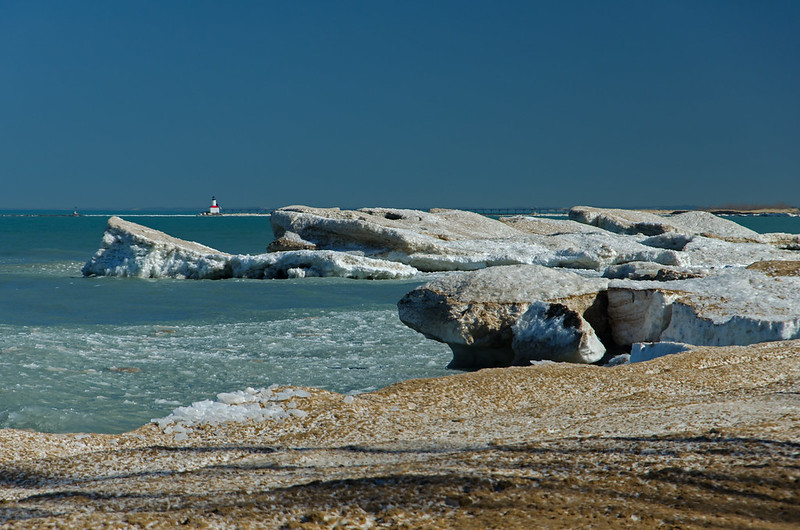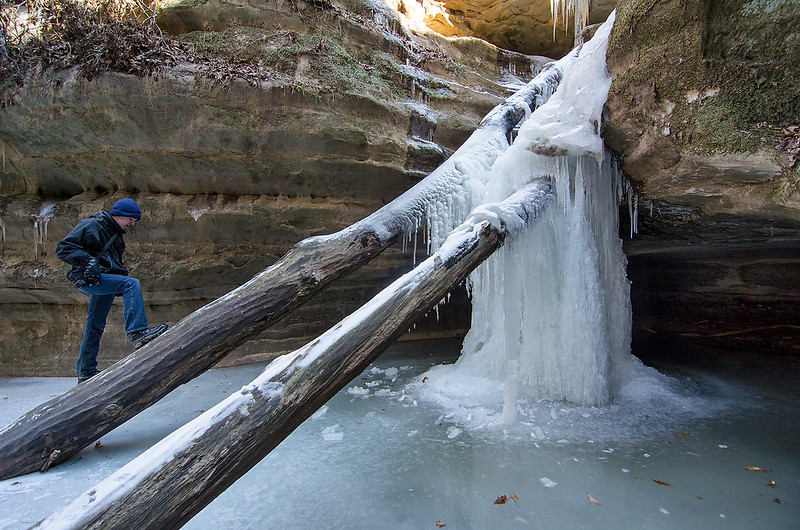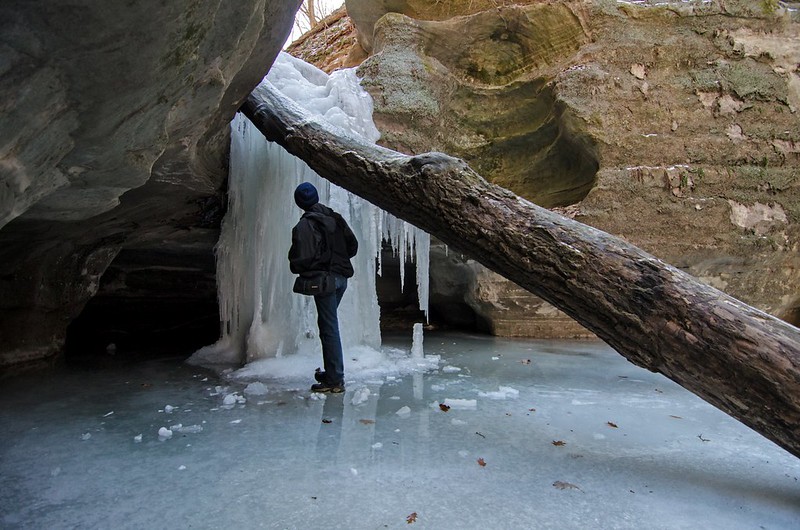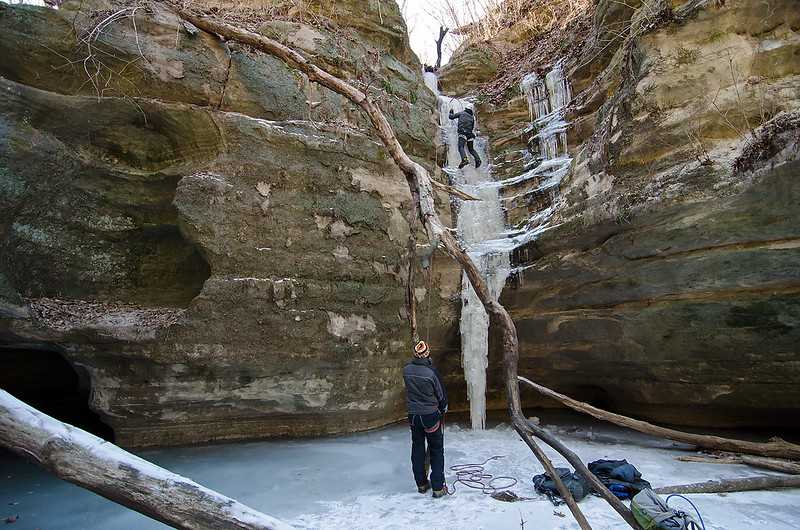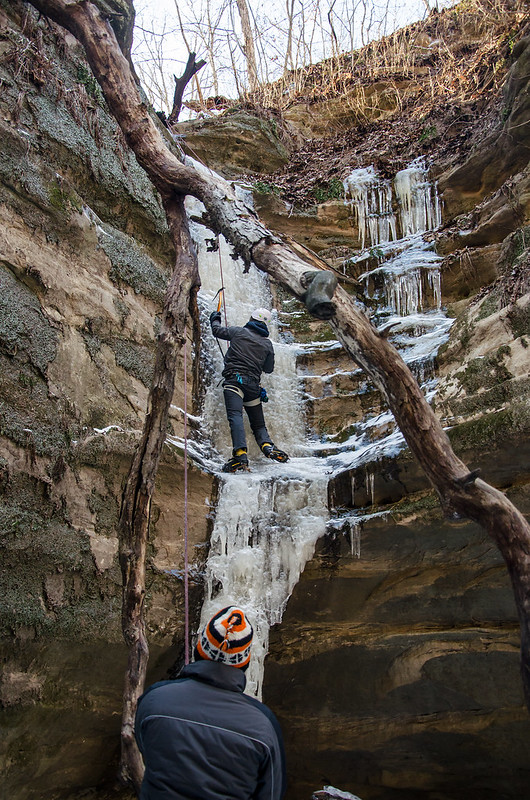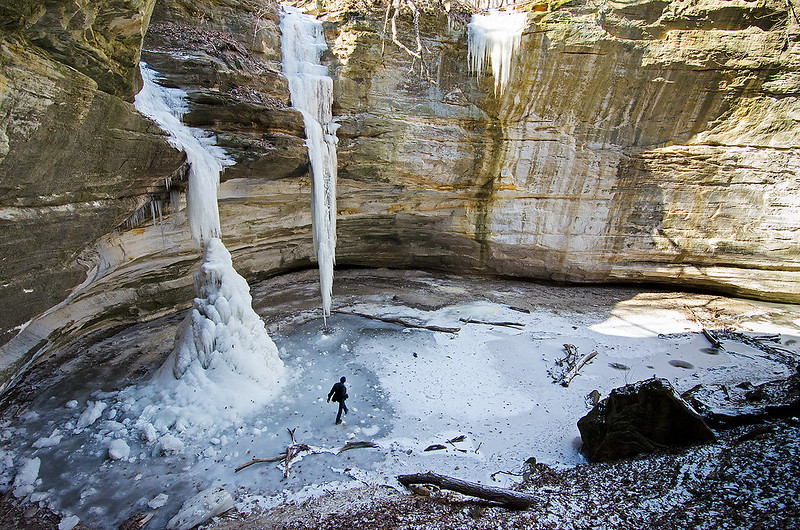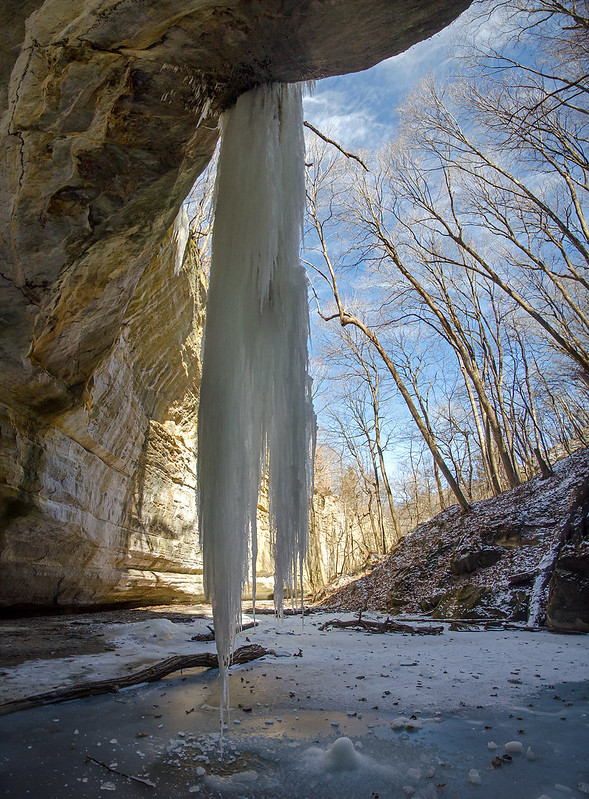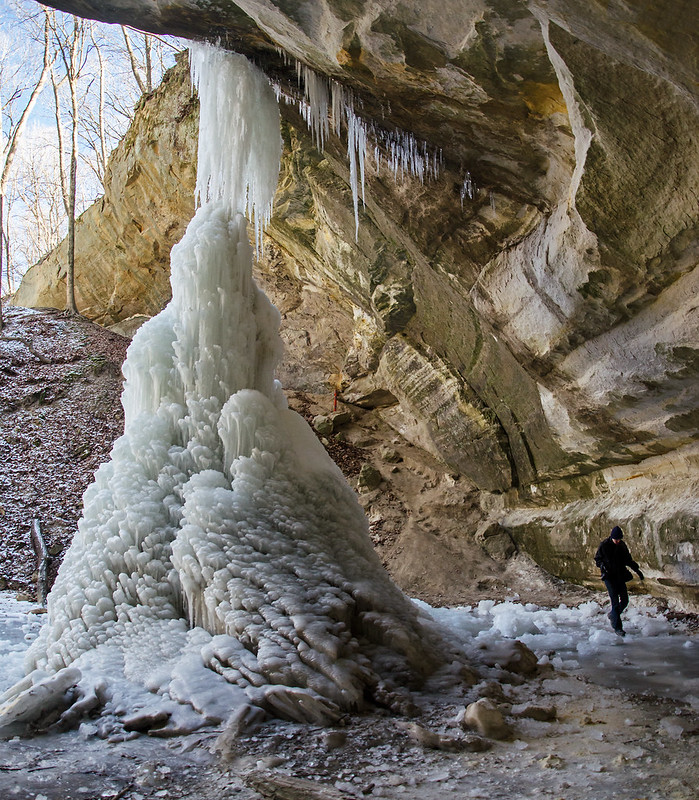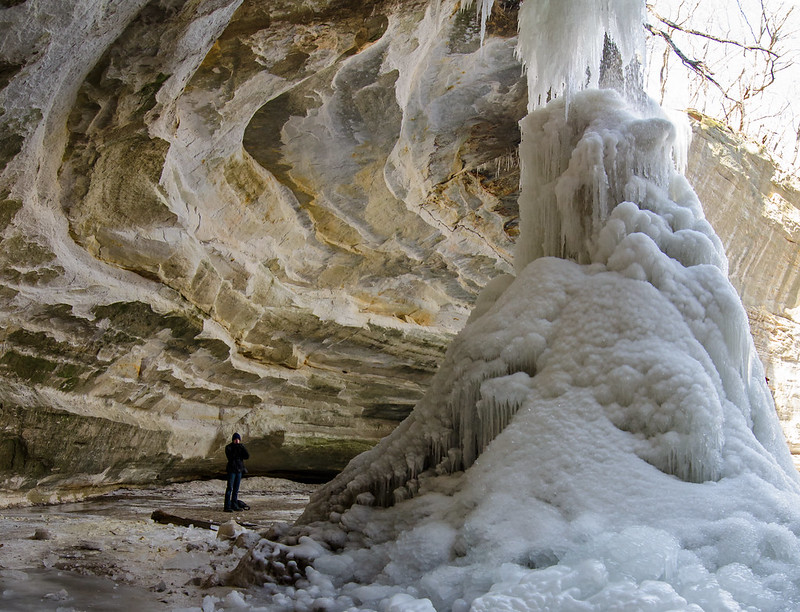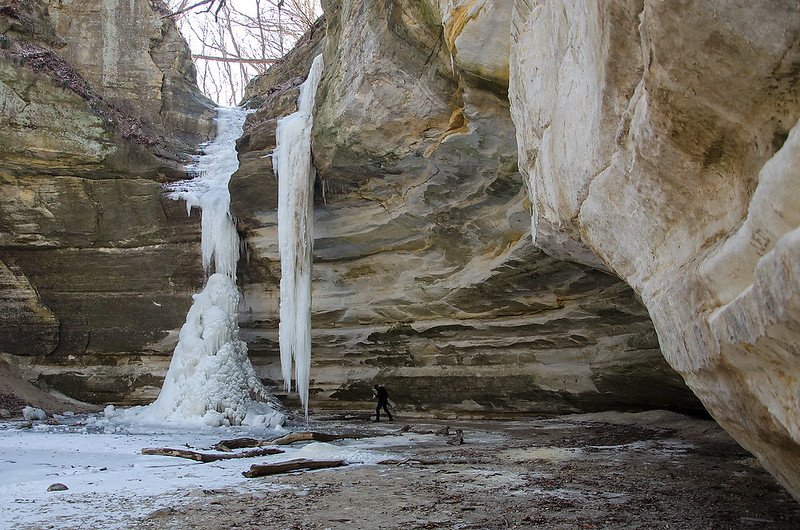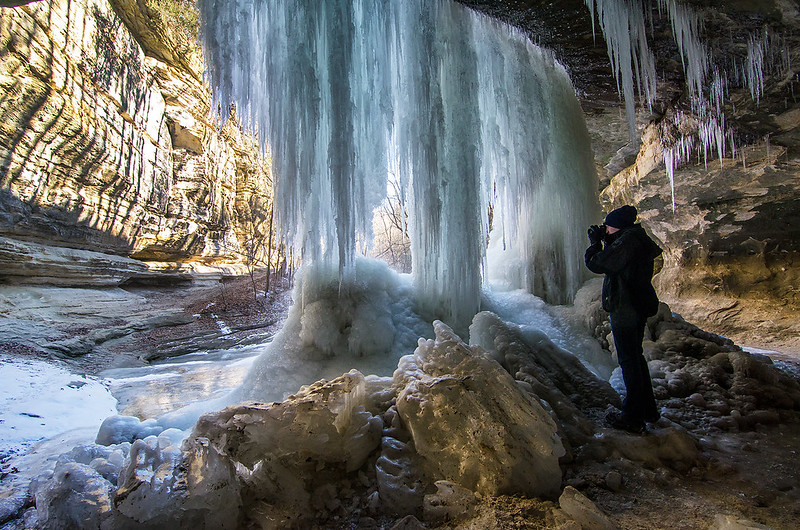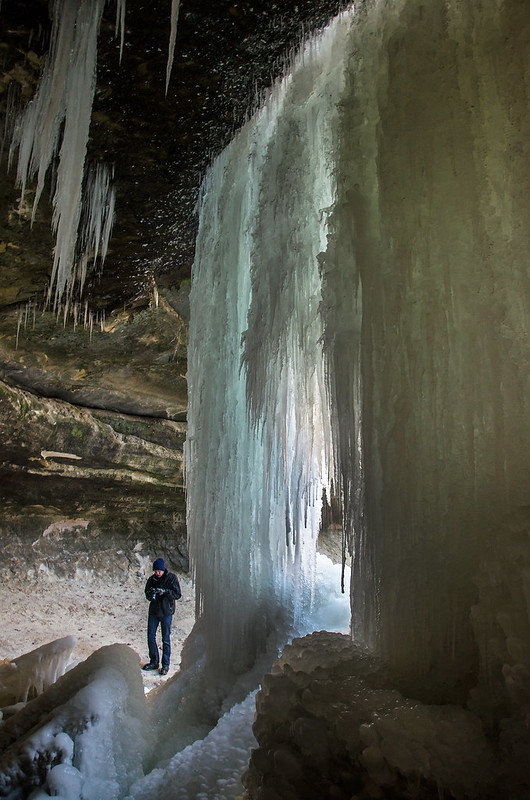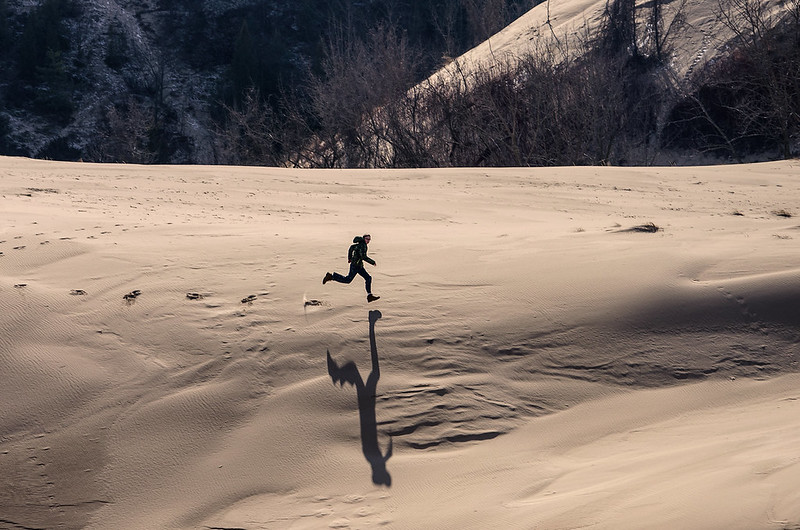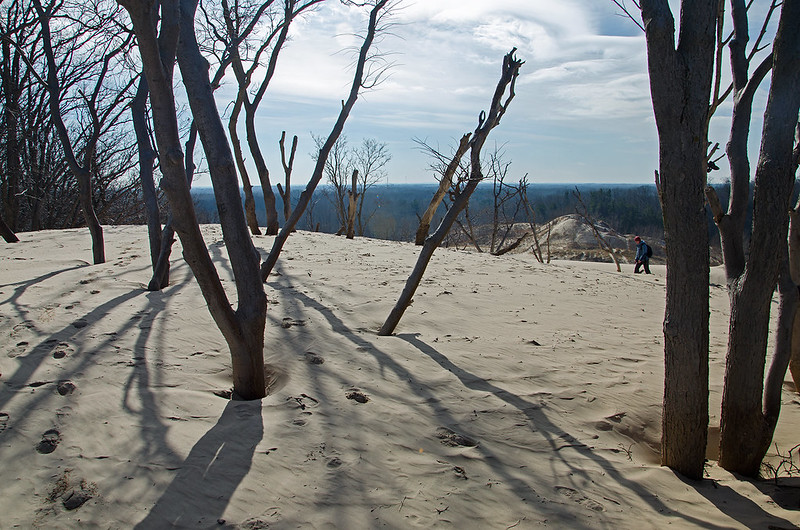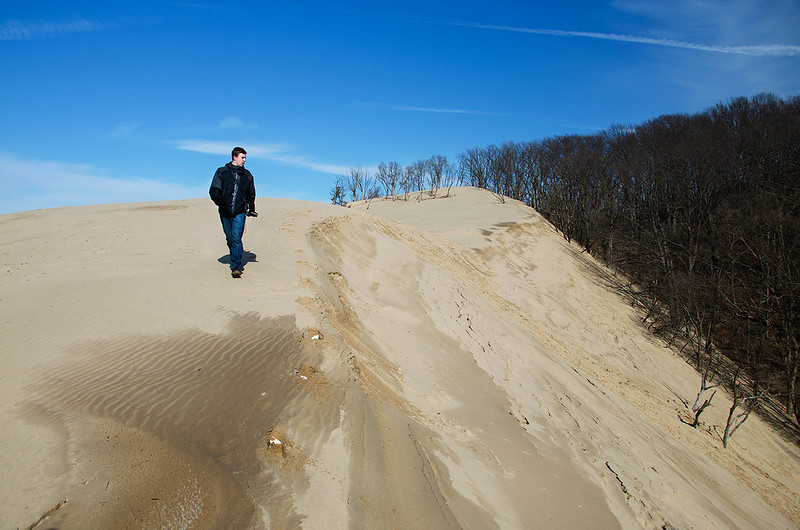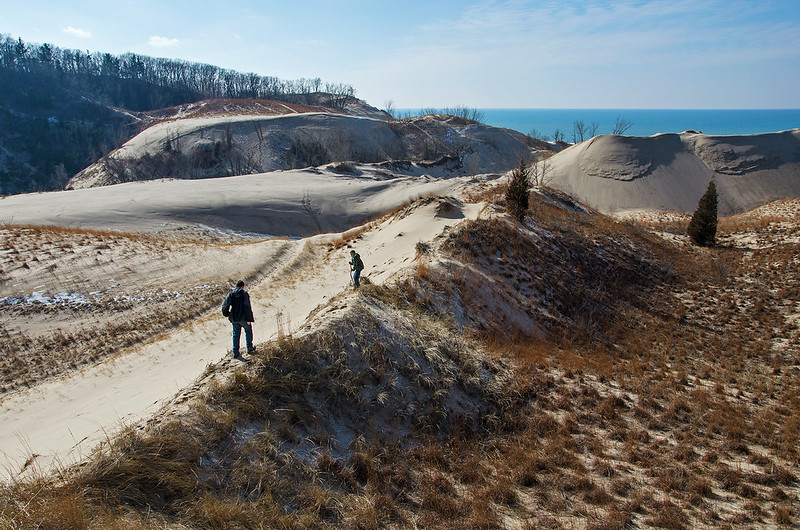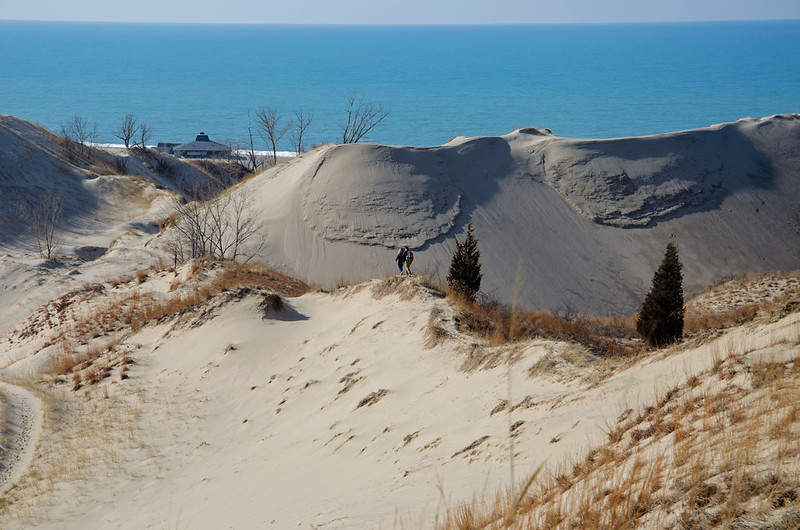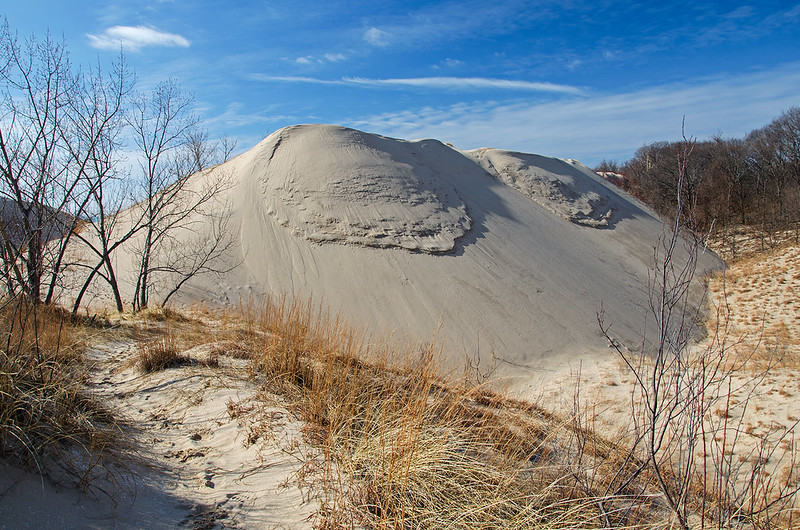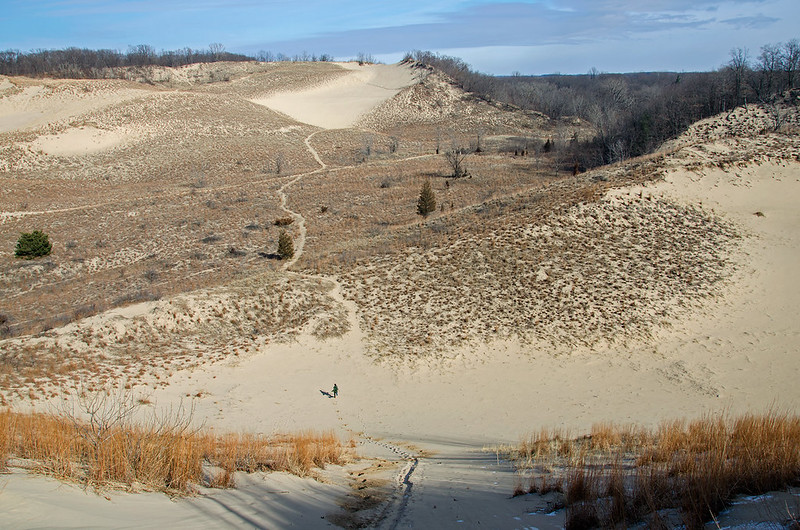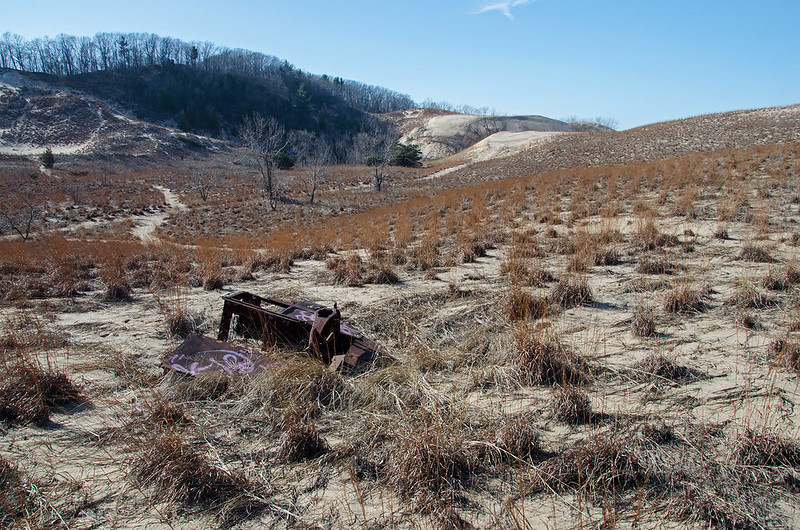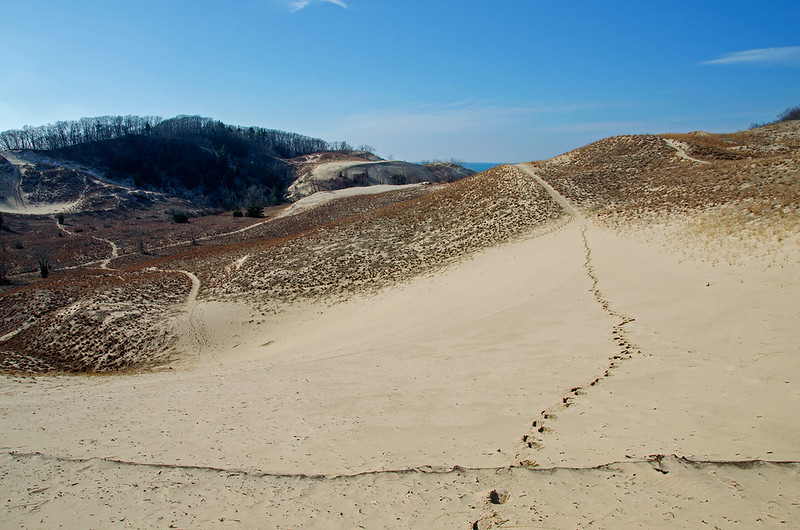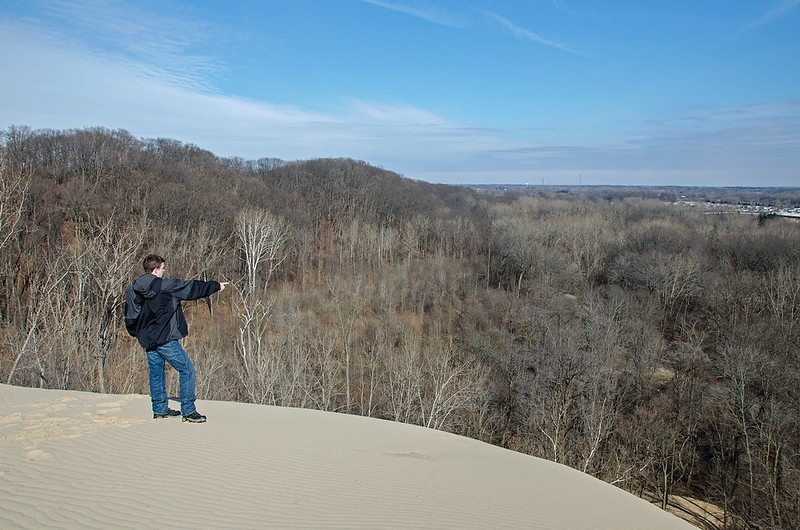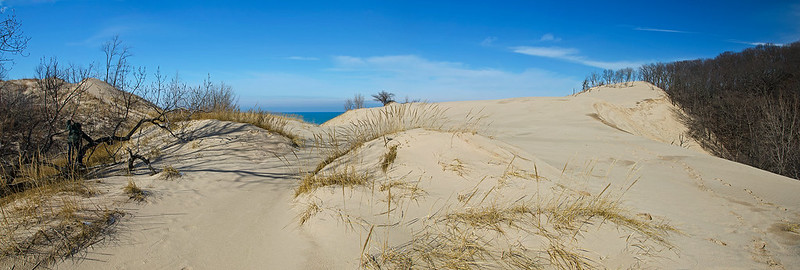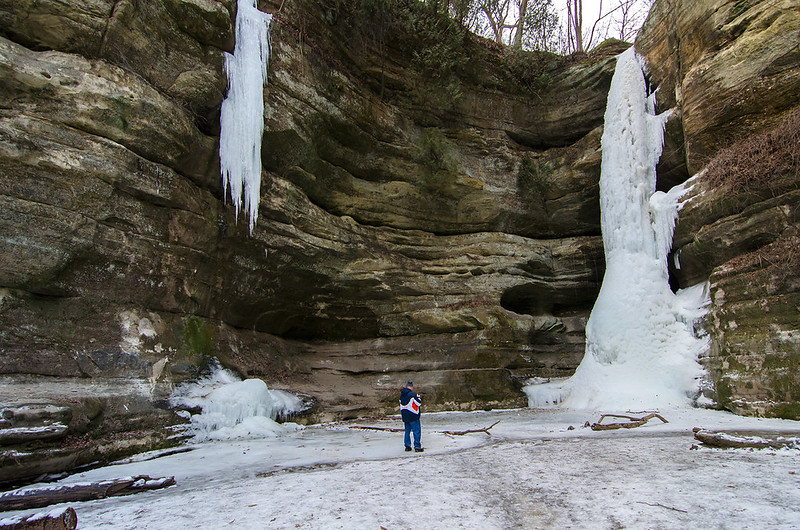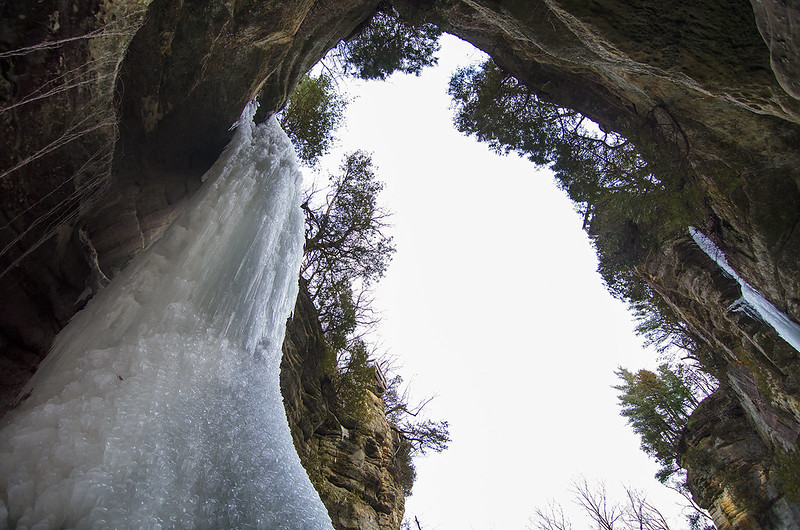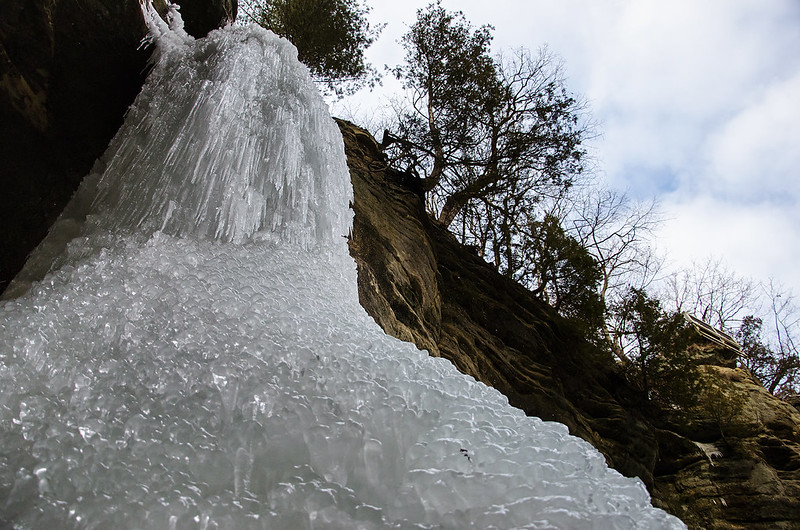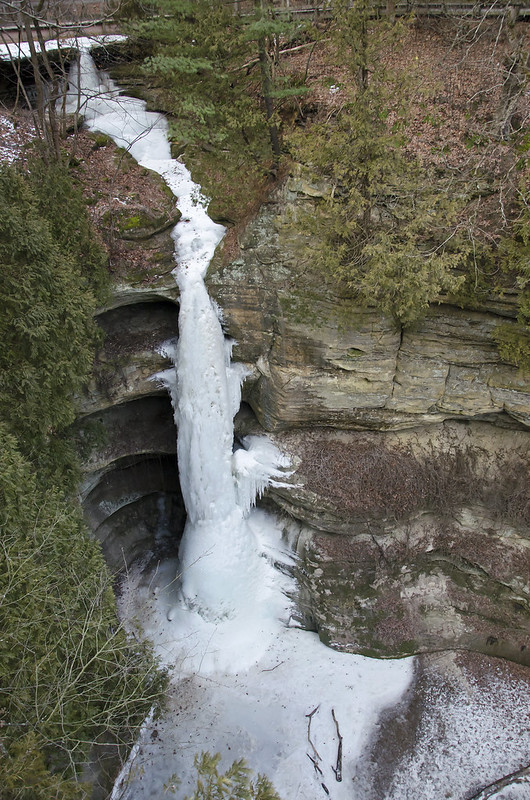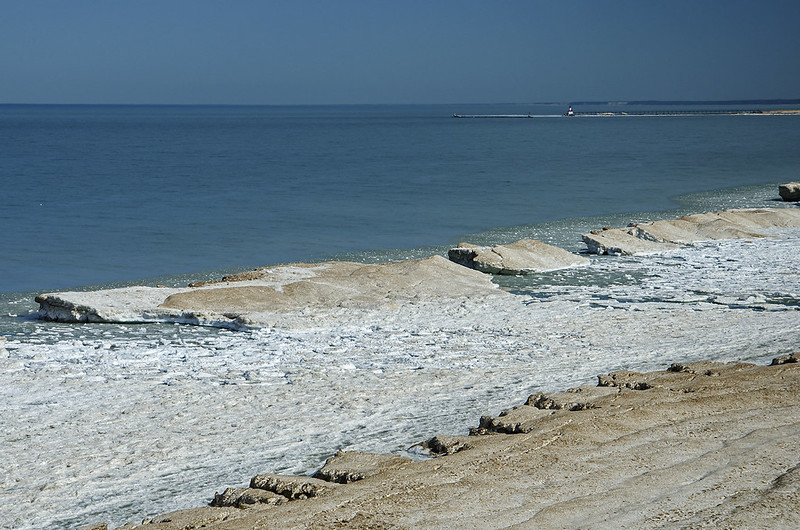
With so many unusual stretches of warm weather this winter, the shelf ice on Lake Michigan never developed as vast as usual. However, some did form, and with the recent days of temperatures reaching 60 degrees, it's disappearing fast. The break up of the ice is interesting to watch, as each waves batters the mounds of ice until one breaks. This allows the waves to reach the flat ice between the mounds, and they begin to crack and tear apart. These pieces of ice bump into one another constantly, and eventually become round in shape; these formations are called pancake ice.
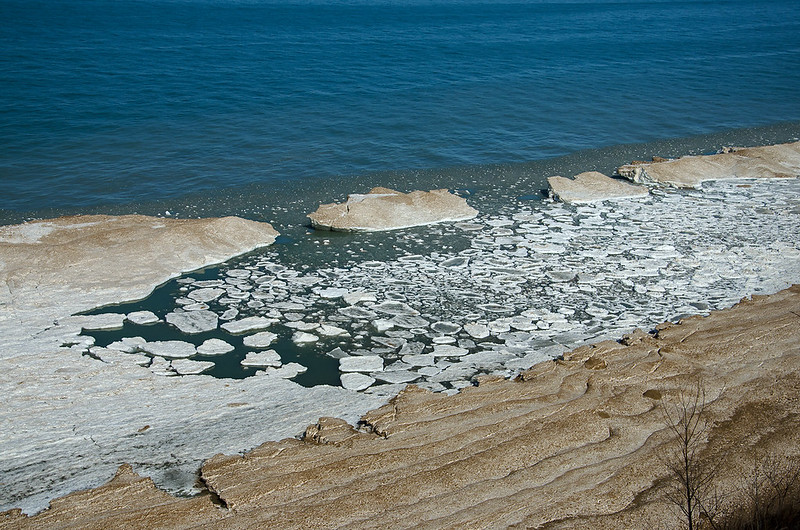 Our hike brought us to a high elevation on private land, where we could view the lakefront and the ice from above. The extent of the shelf ice, while not as large as most years, is better seen from above. In addition, many textures and patterns are evident from this height, but not from the beach. With no other people around, there is little on the beach to give the images scale, but the mounds of ice were between 15 and 20 feet off of the water.
Our hike brought us to a high elevation on private land, where we could view the lakefront and the ice from above. The extent of the shelf ice, while not as large as most years, is better seen from above. In addition, many textures and patterns are evident from this height, but not from the beach. With no other people around, there is little on the beach to give the images scale, but the mounds of ice were between 15 and 20 feet off of the water.As we walked on our return trip, the ice was breaking up even faster than before, and more and more pancake ice was forming along the shore, perhaps to become incorporated in the next round of shelf ice should the weather turn cold again.
